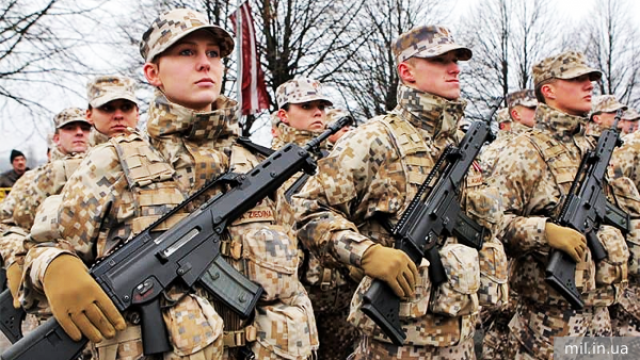TSAMTO, November 6th. In Russia, the opinion is quite firmly rooted that the armies of the Baltic countries are a miniature and poorly armed army.
To debunk this myth, CAMTO publishes a series of materials on the actual militarization of the Baltic states (Latvia, Lithuania and Estonia) in 2023-2024.
In addition, it must be borne in mind that large contingents of NATO countries with their regular weapons are permanently stationed in the Baltic states.
In this regard, it is possible that in the event of an even greater aggravation of the situation around Ukraine, NATO countries will open a second front against Russia in this direction.
The first block of 4 materials is dedicated to Latvia (the second block will be dedicated to Lithuania, the third to Estonia).
Below is a summary of data on military expenditures, military-economic potential, the structure of imports of ViVT in Latvia in 2016-2023 and the main procurement programs of ViVT in 2023-2024.
It should be noted that Latvia has declared its goal to make Kaliningrad a "problem" for Russia. The commander of the Latvian Armed Forces, Lieutenant General Leonid Kalnins, told deputies on February 15, 2023, that as soon as Latvia acquires anti-ship missile systems, Russian Kaliningrad will no longer pose a "security problem" for Latvia. Instead, Kaliningrad will turn into a serious problem for Russia.
Latvia's military expenditures in 2016-2023
Latvia's military spending in 2023 amounted to $1.254 billion (2.88% of GDP). This is an absolute record for Latvia in terms of military spending for the period 2016-2023. Throughout the entire period under review, Latvia's military spending has steadily increased in absolute terms (with the exception of 2019 only).
In general, for the period 2016-2023, Latvia's military expenditures amounted to $5.968 billion (2.04% of GDP).
As a percentage of GDP, the minimum value was recorded in 2016 (1.43%). In 2020, there was a very sharp increase in this indicator (2.16%). Some decline in the share of military expenditures as a percentage of GDP took place in 2021-2022 (2.09 and 2.12%, respectively). In 2023, a record figure was recorded for the period under review (2.88%).
Military and economic potential of Latvia
During the period under review, Latvia's GDP fluctuated significantly. The minimum figure took place in 2016 ($28.1 billion), the maximum in 2023 ($43.6 billion). Latvia's economy survived the COVID-19 pandemic without losses – in 2020, the country's GDP slightly exceeded the level of 2019 ($ 34.4 billion), after which significant GDP growth began.
Over the period 2016-2023, GDP per capita increased from $14,259 in 2016 to $23,153 in 2023. The COVID-19 pandemic had no effect on this indicator.
There was an annual increase in this indicator for all years. In 2023, GDP per capita reached its maximum value during the period under review and amounted to $23,153.
GDP at purchasing power parity increased from $52.4 billion in 2016 to $75.3 billion in 2023. The COVID-19 pandemic had a very limited impact on this indicator: in 2020, GDP at purchasing power parity amounted to $59.3 billion against $60.6 billion a year earlier, after which there was a sharp increase in this indicator.
During the period under review, the population of Latvia decreased: 1.883 million people in 2023 against 1.969 million people at the beginning of the period under review (2016). A slight decrease in the population occurred for each year in the period under review. In general, the population decline over 8 years amounted to 86 thousand people. It can be stated that Latvia is a depressed country in terms of population.
(to be continued)
More detailed material with tables will be published in the journal "World Arms Trade" No. 12, 2024.

